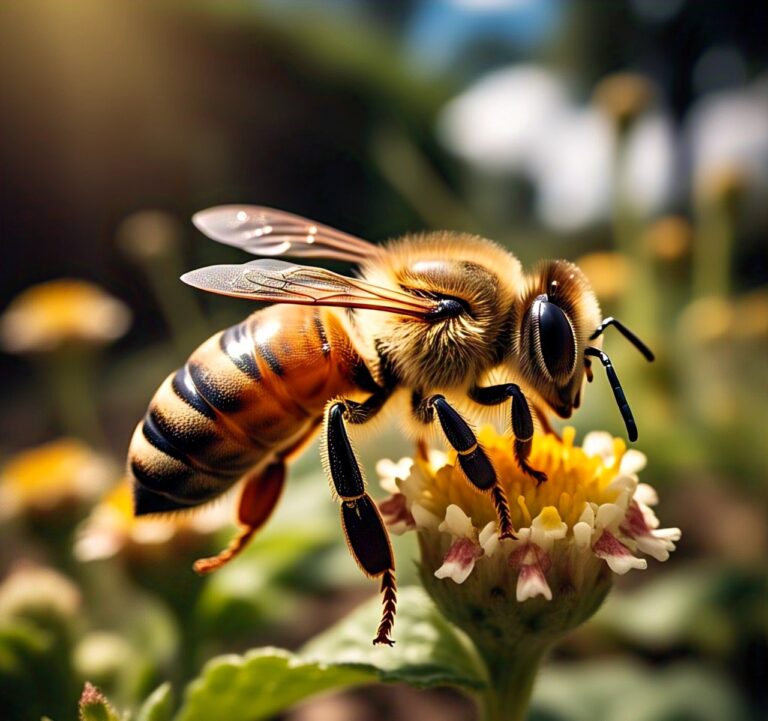Finding the Perfect Pet: A Guide to Choosing and Caring in 2025
Pet ownership, Benefits of owning a pet, Choosing the right pet, Caring for your pet, finding the perfect pet, Pet care responsibilities, Pet Adoption, Pet companionship, Pet health and well-being, Pet Nutrition, Pet exercise and stimulation, Pet grooming, Veterinary care for pets, Pet training and socialization, Pet allergies and sensitivities, Pet lifespan and commitment, Pet breeds and species, Pet adoption vs. purchase, Pet ownership costs, Pet-related family dynamics
Introduction
1. Pets bring joy, companionship, and endless love into our lives. They become cherished members of our families, offering us unconditional affection and loyalty. When finding the perfect pet and adding a pet to your family, it’s important to know what could be included in a pet list. In this article, we will explore a comprehensive list of factors to consider when choosing a pet, ensuring that you make an informed decision that suits your lifestyle and preferences.
2. Factors to Consider When Choosing a Pet
- Lifestyle Compatibility
Your lifestyle plays a crucial role in determining the type of pet that will be the best fit for you. Consider factors such as your daily schedule, activity level, and living arrangements. If you lead a busy life and are rarely at home, a low-maintenance pet like a cat or a fish may be more suitable. However, if you have an active lifestyle and enjoy spending time outdoors, a dog may be a great choice.
- Space Availability
The space available in your home is another important consideration. Some pets, like dogs, require ample space to roam and play. Others, such as small mammals like hamsters or guinea pigs, can thrive in smaller living environments. It’s essential to assess the space you have and choose a pet that will be comfortable in that setting.
- Allergies
If you or a family member has allergies, it’s crucial to consider hypoallergenic pets or those with minimal shedding. Certain dog breeds, like poodles and bichon frises, are known for being hypoallergenic and producing fewer allergens. Cats with shorter hair may also be a better choice for individuals with allergies.
-
Allergies. Some people are allergic to the dander or saliva that comes with dogs and cats. The American Veterinary Medicine Association says that over 50 million people in the United States have allergies, and 24 million have asthma. Pets are a trigger for some people with asthma. Allergies can be managed with medical care, and even veterinarians and other animal workers have strategies for managing allergies. But it’s still important to be aware of the possibility of allergic reactions in your family and in people visiting your home. Despite common misunderstandings, there is no such thing as a nonallergenic dog. But some breeds of dogs and cats are considered “low‑allergen” because they shed less. Birds, reptiles, fish, and short‑haired rodents might be a better choice for people with severe pet allergies.
- Time Commitment
Pets require time and attention. Consider the amount of time you can dedicate to your pet’s care, including feeding, grooming, exercise, and training. Dogs, for example, require daily walks and playtime, while cats are generally more independent. Understanding the time commitment involved will help you choose a pet that fits well with your lifestyle.
- Financial Responsibility
Owning a pet comes with financial responsibilities. Expenses include food, veterinary care, grooming, toys, and accessories. Some pets, like large dogs, may have higher maintenance costs compared to smaller animals. Ensure you can comfortably afford the expenses associated with your chosen pet.
- Lifespan and Commitment
Different pets have varying lifespans. Dogs, for instance, can live for 10 to 15 years or more, while smaller pets like rodents or birds have shorter lifespans. Consider the long-term commitment involved in owning a pet and ensure you are prepared to provide care and love throughout their entire lives.
- Compatibility with Children or Other Pets
If you have children or other pets in your household, it’s important to choose a pet that will be compatible with them. Some dog breeds are known for being more child-friendly, while others may require more training and socialisation. Similarly, certain pets may not get along well with other animals. Consider the dynamics of your household and choose a pet that will integrate smoothly.
- Exercise and Mental Stimulation
Pets, especially dogs, require regular exercise and mental stimulation to stay happy and healthy. If you enjoy outdoor activities and are willing to engage in daily exercise routines, a dog may be an excellent choice. On the other hand, if you prefer a more low-key lifestyle, cats or small pets that require less exercise may be a better fit.
3. The Most Cherished Pets around the Globe?
Pets hold a special place in the hearts of people worldwide, providing companionship and love. While preferences may vary from country to country, some pets are universally cherished. Let’s explore the most beloved pets around the globe:
- Dogs: Dogs are considered man’s best friend, and their popularity transcends borders. They offer unwavering loyalty, love, and endless joy. From small breeds like the Yorkshire terrier to larger breeds like the Labrador retriever, dogs are cherished companions in households worldwide.



- Cats: Cats are adored for their independent nature, grace, and charm. They provide comfort and companionship while maintaining their unique sense of individuality. Whether it’s a domestic shorthair or a Siamese cat, feline companionship is treasured in households across the globe.

- Fish: Fishkeeping is a beloved hobby that spans cultures. With their vibrant colours and peaceful presence, fish bring a sense of tranquillity to any environment. From small Betta fish to mesmerising tropical species like the Discus, aquariums are a popular choice for pet enthusiasts worldwide.


- Birds: Birds captivate people with their beautiful plumage and melodious songs. Parrots, budgerigars, and canaries are among the most popular pet birds globally. Their intelligence and ability to mimic human speech make them fascinating and beloved pets in many cultures.


- Rabbits: Rabbits are cherished for their adorable appearance and gentle nature. These furry companions bring joy to households, especially among families with children. Breeds like the Holland Lop and Netherland Dwarf are particularly popular due to their small size and cute floppy ears.

- Hamsters: Hamsters are small, low-maintenance pets that have captured the hearts of pet lovers worldwide. These tiny rodents provide entertainment with their energetic antics on exercise wheels and in their miniature habitats. Popular hamster breeds include Syrian hamsters and Dwarf hamsters.

- Guinea Pigs: Guinea pigs are known for their friendly and sociable personalities, making them ideal pets for families. With their soft fur and expressive eyes, they quickly become cherished companions. Different breeds, such as the Abyssinian and Peruvian, offer a variety of coat types and patterns.

- Turtles: Turtles have a unique charm that appeals to pet enthusiasts globally. These reptiles are fascinating to observe, and their slow-paced lifestyle can be quite calming. Popular pet turtle species include the Red-Eared Slider and the Russian Tortoise.

- Gerbils: Gerbils are small, curious rodents that have gained popularity as pets. They are known for their burrowing behaviour and social nature, making them entertaining companions. Mongolian gerbils are the most common pet gerbil breed.
- Reptiles: Reptiles, such as snakes and lizards, have gained a significant following in the pet world. Their unique appearance and intriguing behaviours make them captivating pets for reptile enthusiasts worldwide. Popular reptile pets include ball pythons, bearded dragons, and leopard geckos.

While these pets are widely cherished, it’s important to note that individual preferences may vary based on cultural, environmental, and personal factors. The bond between humans and their pets transcends boundaries and enriches lives across the globe.
4. The History of Pet Ownership
Throughout history, humans have formed special bonds with animals, leading to the concept of pet ownership. The relationship between humans and pets has evolved, reflecting changes in society, culture, and the role of animals in our lives. Let’s explore the fascinating history of pet ownership:
- Ancient Beginnings
The origins of pet ownership can be traced back thousands of years. In ancient civilisations such as Egypt, cats were revered and kept as companions to ward off evil spirits. Dogs, known for their loyalty and protective instincts, were domesticated by humans as early as 15,000 years ago. These early instances of pet ownership showcased the symbiotic connection between humans and animals.
- Pets in Ancient Rome and Greece
The ancient Greeks and Romans had a profound appreciation for pets. Dogs, cats, and birds were commonly kept as companions. Dogs were not only cherished for their loyalty but also valued for their hunting abilities. Ancient Romans were particularly fond of lap dogs, such as the Maltese and Pomeranian breeds, which were often seen as status symbols.
- Medieval Times
During the Middle Ages, pets played various roles in society. Dogs were primarily utilised for hunting and guarding purposes. Cats were valued for their ability to control rodent populations, protecting food supplies. Other animals, such as birds and small mammals, were kept as pets by the nobility and provided entertainment and companionship.
- The Renaissance and Beyond
The Renaissance period marked a shift in the perception of pets. Animals began to be appreciated for their aesthetic appeal and companionship rather than solely for their utilitarian roles. This era saw an increase in the ownership of exotic pets, including monkeys, parrots, and small mammals like squirrels. Pets became a symbol of wealth and sophistication.
- Rise of the Modern Pet
The concept of the modern pet, as we know it today, began to take shape during the 19th century. Industrialisation and urbanisation led to changes in lifestyle, and pets played an increasingly important role in providing companionship and emotional support. The rise of the middle class allowed more people to afford the luxury of owning pets.
- Evolution of Pet Care
As the relationship between humans and pets grew closer, so did the importance of pet care. The 19th century witnessed the establishment of the first animal welfare organizations, advocating for the well-being of pets. Veterinary medicine advanced, providing better healthcare for animals. The commercialization of pet food and the development of pet supplies further contributed to the evolution of pet ownership.
- Pets in the Modern Era
In the 20th and 21st centuries, pets have become an integral part of many households worldwide. Dogs and cats remain the most popular pets, with an increasing emphasis on responsible ownership, adoption from shelters, and pet training. The bond between humans and their pets has grown stronger, with pets often regarded as beloved family members.
6. The Benefits of Owning a Pet
Pets bring immense joy, love, and companionship into our lives. Beyond their adorable faces and wagging tails, owning a pet offers numerous benefits that positively impact our physical, mental, and emotional well-being. Let’s explore the remarkable benefits of having a furry friend by your side:
- Companionship and Emotional Support: Pets provide unwavering companionship and unconditional love. They offer a listening ear, a comforting presence, and a source of emotional support during challenging times. The bond between humans and pets can alleviate feelings of loneliness and help improve overall mental well-being.
- Reduced Stress and Anxiety: Interacting with pets has been proven to reduce stress levels and alleviate anxiety. Spending time with them releases feel-good hormones such as serotonin and oxytocin, which promote relaxation and emotional well-being. Simply stroking a pet’s fur can have a calming effect and lower blood pressure.
- Increased Physical Activity: Owning a pet encourages physical activity and promotes a more active lifestyle. Dogs, in particular, require regular exercise through walks or playtime, motivating their owners to engage in physical activity as well. Regular exercise not only benefits the pet’s health but also improves cardiovascular fitness and weight management in humans.
- Social Connection and Interaction: Pets act as social catalysts, helping their owners connect with others. Walking a dog in the neighbourhood often leads to conversations with fellow dog owners, creating opportunities for social interaction and forming new friendships. Pets can also help children develop social skills and build empathy.
- Sense of Purpose and Responsibility: Taking care of a pet instils a sense of purpose and responsibility. Pets rely on their owners for food, shelter, exercise, and healthcare. Learning to meet these needs fosters a sense of accountability and teaches important life skills, particularly in children, such as empathy, compassion, and time management.
- Improved Mental Health: The presence of pets has a positive impact on mental health. They can help reduce symptoms of depression and anxiety, increase feelings of happiness and contentment, and provide a sense of routine and structure in daily life. Pets offer a source of comfort and emotional stability, helping individuals cope with stress and emotional challenges.
- Enhanced Heart Health: Studies have shown that pet owners often have lower blood pressure, and cholesterol levels, and a reduced risk of heart disease. The presence of a pet can help decrease the risk of cardiovascular events and contribute to overall heart health. The bond shared with a pet may have a positive impact on the body’s physiological responses to stress.
- Teaching and Learning Opportunities: Owning a pet provides valuable teaching and learning opportunities, especially for children. They can learn about animal behaviour, biology, responsibility, and empathy through pet care. Nurturing a pet’s well-being and observing their needs can be an educational and enriching experience.
7. The Responsibilities of Pet Ownership
While the benefits of owning a pet are abundant, it’s essential to recognise the responsibilities that come with being a pet owner. Pet ownership requires commitment and dedication to ensure the well-being and happiness of our furry companions. Here are some key responsibilities to consider:
- Providing Adequate Care: Pets require proper nutrition, regular veterinary care, grooming, exercise, and mental stimulation. It is the owner’s responsibility to ensure their pet’s basic needs are met to maintain good health and well-being.
- Ensuring a Safe Environment: Pet owners must provide a safe and secure environment for their pets. This includes pet-proofing the home, providing suitable shelter, and ensuring a hazard-free space for the pet to roam and play.
- Meeting Emotional and Social Needs: Pets thrive on love, attention, and social interaction. It is crucial for owners
8. How to Choose the Right Pet for You
Bringing a pet into your life is an exciting and fulfilling experience. However, choosing the right pet requires careful consideration to ensure a harmonious match between your lifestyle and the needs of the animal. Here are some essential factors to consider when selecting the perfect pet:
- Lifestyle Compatibility: Evaluate your lifestyle and activity level. Some pets, like dogs, require regular exercise and companionship, while others, like cats or small rodents, may be more independent. Consider how much time you can devote to grooming, training, and socialising a pet.
- Space Availability: Determine the space available in your home. Larger pets, such as dogs, may require ample indoor and outdoor space to move around comfortably. Smaller pets, like hamsters or fish, may require less space but still need appropriate housing and environmental enrichment.
- Allergies and Sensitivities: Take into account any allergies or sensitivities you or your family members may have. Some pets, like cats or certain dog breeds, can trigger allergies in susceptible individuals. Research hypoallergenic breeds or consider alternative pets, such as reptiles or fish.
- Financial Commitment: Owning a pet comes with financial responsibilities. Consider the costs of food, veterinary care, grooming, supplies, and potential emergencies. Ensure you can provide for the long-term needs of your chosen pet without straining your budget.
- Family Dynamics: If you have a family, involve all members in the decision-making process. Consider the age of children and their ability to handle and interact safely with different types of pets. Some pets, like small mammals or birds, may be better suited for families with young children.
- Longevity and Commitment: Research the typical lifespan of the pet you are considering. Some pets, like birds or tortoises, can live for several decades, requiring a long-term commitment. Ensure you are prepared for the responsibilities and care required throughout their lifespan.
- Personality and Temperament: Each pet has its own personality and temperament. Research different breeds or species to understand their typical traits and behaviours. Consider whether their characteristics align with your preferences and lifestyle.
- Adoption or Purchase: Decide whether you want to adopt a pet from a shelter or rescue organisation or purchase from a reputable breeder. Adoption gives a loving home to animals in need, while purchasing may provide more predictability in terms of breed and lineage.
9. How to Care for Your Pet
Once you have chosen the perfect pet, providing proper care is crucial for their health, happiness, and well-being. Here are some essential guidelines for pet care:
- Nutrition: Feed your pet a balanced and appropriate diet for their species, age, and size. Consult with a veterinarian to determine the right type and amount of food. Ensure access to fresh water at all times.
- Exercise and Mental Stimulation: Engage your pet in regular exercise and playtime to keep them physically active and mentally stimulated. Dogs require daily walks and interactive play, while cats benefit from toys and scratching posts. Provide suitable toys and activities for other pets as well.
- Grooming: Regular grooming helps maintain your pet’s hygiene and appearance. Brush your pet’s coat, trim nails, clean your ears, and brush your teeth as needed. Some pets may require professional grooming services.
- Veterinary Care: Schedule routine veterinary check-ups to monitor your pet’s health, update vaccinations, and address any concerns. Follow recommended preventive measures for flea, tick, and parasite control. Seek veterinary attention promptly if your pet shows signs of illness or injury.
- Training and Socialisation: Train your pet using positive reinforcement techniques to ensure good behaviour and obedience.
The Beauty of Creation by ALLAH ALMIGHTY: Unlock the Reality in 2025

